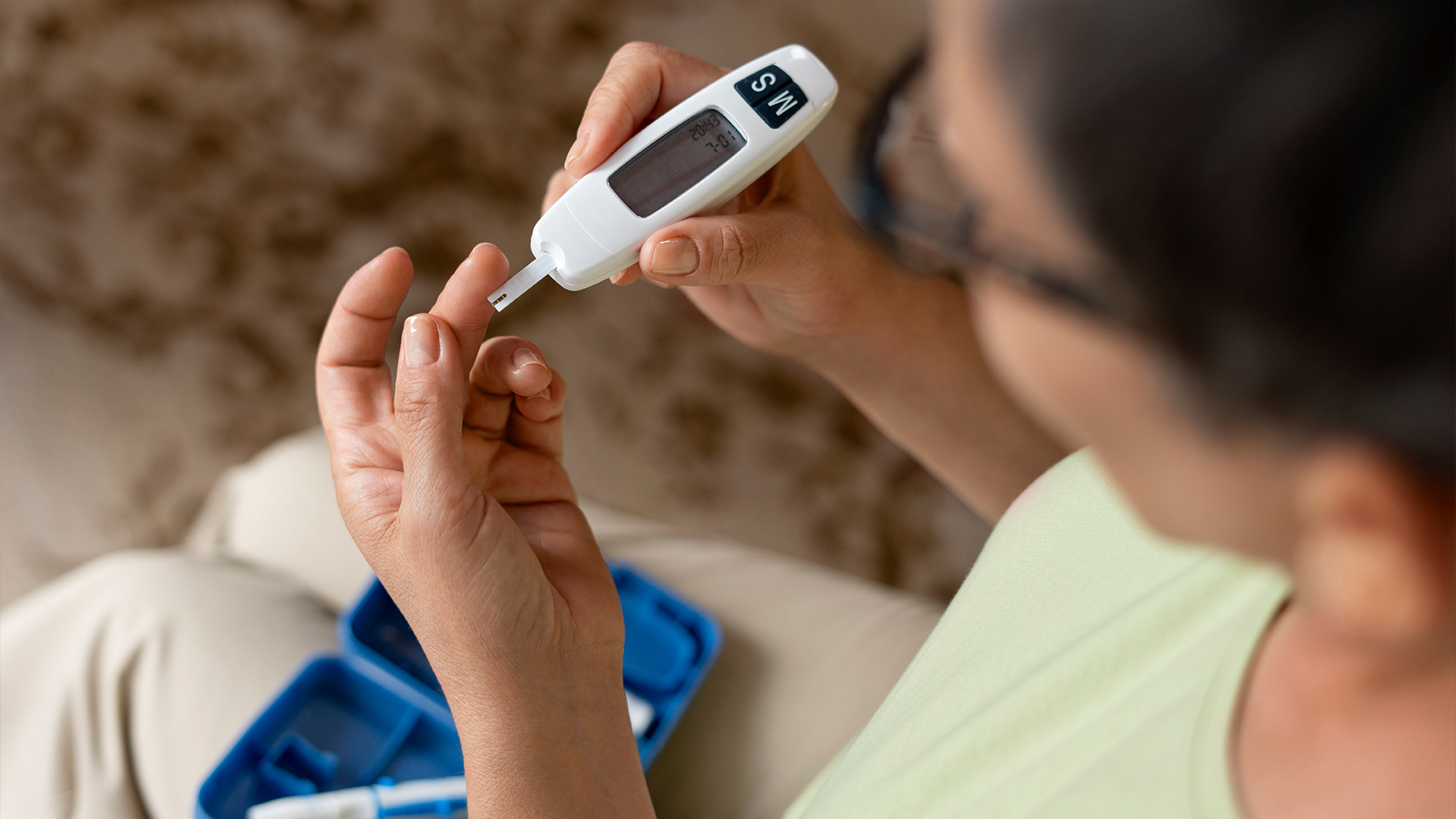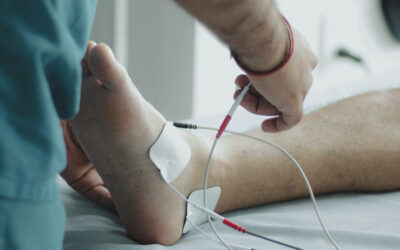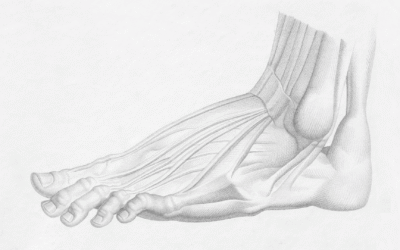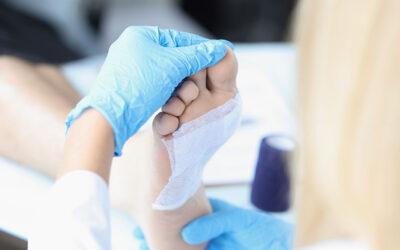Peripheral Artery Disease (PAD) and diabetes are closely linked, forming a dangerous combination that significantly impacts foot health and overall well-being. PAD occurs when arteries narrow due to plaque buildup, limiting blood flow to the limbs. For individuals with diabetes, this reduced circulation can cause severe complications, including non-healing wounds, infections, and amputations. At Capital Foot Care, our expert podiatrists—Dr. Muhammad A. Khalid, Dr. Fritz-Andre Duterlein, and Dr. Herman Zarate—are dedicated to providing specialized care to help patients manage PAD and diabetes effectively.
What is Peripheral Artery Disease (PAD)?
PAD is a circulatory condition that affects the arteries in the legs and feet. The narrowing or blockage of these arteries is caused by atherosclerosis, a buildup of fatty deposits along the arterial walls. This restricts blood flow to the limbs, depriving tissues of oxygen and nutrients required for healing and healthy function.

Symptoms of PAD:
- Leg Pain or Cramping: Pain in the legs, thighs, or buttocks during walking or exercise that subsides with rest (known as claudication).
- Coldness in the Feet or Legs: A noticeable difference in temperature between the legs and other parts of the body.
- Non-Healing Wounds or Ulcers: Sores on the feet or legs that do not heal due to poor circulation.
- Shiny, Discolored Skin: Skin on the legs may appear shiny or take on a bluish or reddish hue.
- Weak or Absent Pulse: The pulse in the foot may be faint or undetectable.
- Numbness or Tingling: Reduced blood flow can cause numbness or a “pins and needles” sensation.
How Diabetes Increases the Risk of PAD
Diabetes significantly increases the likelihood of developing PAD due to its impact on blood vessels and circulation. High blood sugar levels over time damage the lining of blood vessels, promoting plaque buildup and arterial narrowing.

Additionally, diabetes can lead to nerve damage (neuropathy), which reduces sensation in the feet and makes it harder to detect injuries.
The Dangers of PAD in Diabetics:
- Delayed Wound Healing: Reduced circulation slows the delivery of oxygen and nutrients to wounds, increasing the risk of infections and chronic ulcers.
- Higher Risk of Infections: Even minor cuts or blisters can develop into serious infections, as the immune response is weakened by poor circulation.
- Gangrene and Amputation: Severe PAD in combination with diabetes can lead to tissue death (gangrene), requiring amputation to prevent the spread of infection.
Understanding the Progression of PAD
PAD progresses in stages, and understanding these can help patients recognize the condition early and seek timely intervention:
- Asymptomatic Stage: Many individuals with PAD may not experience any symptoms initially. This highlights the importance of routine screenings for those with risk factors, such as diabetes or smoking.
- Claudication Stage: Pain during walking or exercise is a hallmark of this stage. The pain typically subsides with rest but can progressively worsen if untreated.
- Critical Limb Ischemia (CLI): At this advanced stage, blood flow to the limbs is severely restricted, causing constant pain, non-healing ulcers, and a high risk of tissue death.

Diagnosis of PAD
Accurate diagnosis is essential for effective management of PAD. At Capital Foot Care, we utilize advanced diagnostic tools to identify PAD early and monitor its progression:
- Ankle-Brachial Index (ABI): A non-invasive test that compares blood pressure in the ankle with that in the arm to detect arterial narrowing.
- Doppler Ultrasound: Visualizes blood flow in the arteries to pinpoint blockages or reduced circulation.
- Imaging Tests: In severe cases, CT or MRI angiography may be used to obtain detailed images of the arteries.
Managing PAD and Diabetes: A Comprehensive Approach
Managing PAD in the context of diabetes requires a combination of lifestyle changes, medical interventions, and ongoing care.

Here’s how you can take control:
- Medical Treatments:
- Medications: Blood thinners, cholesterol-lowering drugs, and medications to improve blood flow may be prescribed to manage symptoms and reduce the risk of complications.
- Angioplasty and Stenting: For severe cases, minimally invasive procedures can reopen blocked arteries and improve circulation.
- Lifestyle Changes:
- Exercise Regularly: Engage in supervised walking programs to improve circulation and reduce symptoms of claudication.
- Healthy Diet: Focus on a heart-healthy diet rich in fruits, vegetables, and whole grains to manage cholesterol and blood pressure.
- Quit Smoking: Smoking significantly worsens PAD. Quitting can improve circulation and slow disease progression.
- Routine Foot Care:
- Inspect your feet daily for cuts, blisters, or discoloration.
- Keep your feet clean and moisturized, but avoid applying lotion between the toes.
- Wear well-fitting, supportive footwear to prevent pressure points and injuries.
- Regular Monitoring:
- Routine check-ups with a podiatrist ensure that any developing issues are addressed promptly. At Capital Foot Care, we offer personalized treatment plans to manage PAD effectively and prevent complications.
Living with PAD and Diabetes
Living with PAD and diabetes requires a proactive approach to health. By adhering to prescribed treatments and making lifestyle changes, patients can manage their symptoms and improve their quality of life.

Regular screenings are critical for early detection and intervention, particularly for those with risk factors such as diabetes, high blood pressure, or a history of smoking.
Why Choose Capital Foot Care?
At Capital Foot Care, our experienced team of podiatrists specializes in the diagnosis and management of PAD and diabetes-related foot complications. We combine advanced treatments with personalized care to help you maintain mobility and prevent severe outcomes.
For more information or to schedule a consultation, contact us at 301-927-FOOT (3668) or email us at [email protected]. Take the first step toward better vascular and foot health with the trusted expertise of Dr. Muhammad A. Khalid, Dr. Fritz-Andre Duterlein, and Dr. Herman Zarate.

Peripheral Artery Disease and diabetes are a challenging combination, but with the right care and lifestyle changes, their impact can be minimized. Early detection, proactive management, and professional guidance are essential to maintaining foot health and overall well-being. At Capital Foot Care, we’re here to support you every step of the way. Don’t wait—schedule your appointment today to take control of your vascular health.










